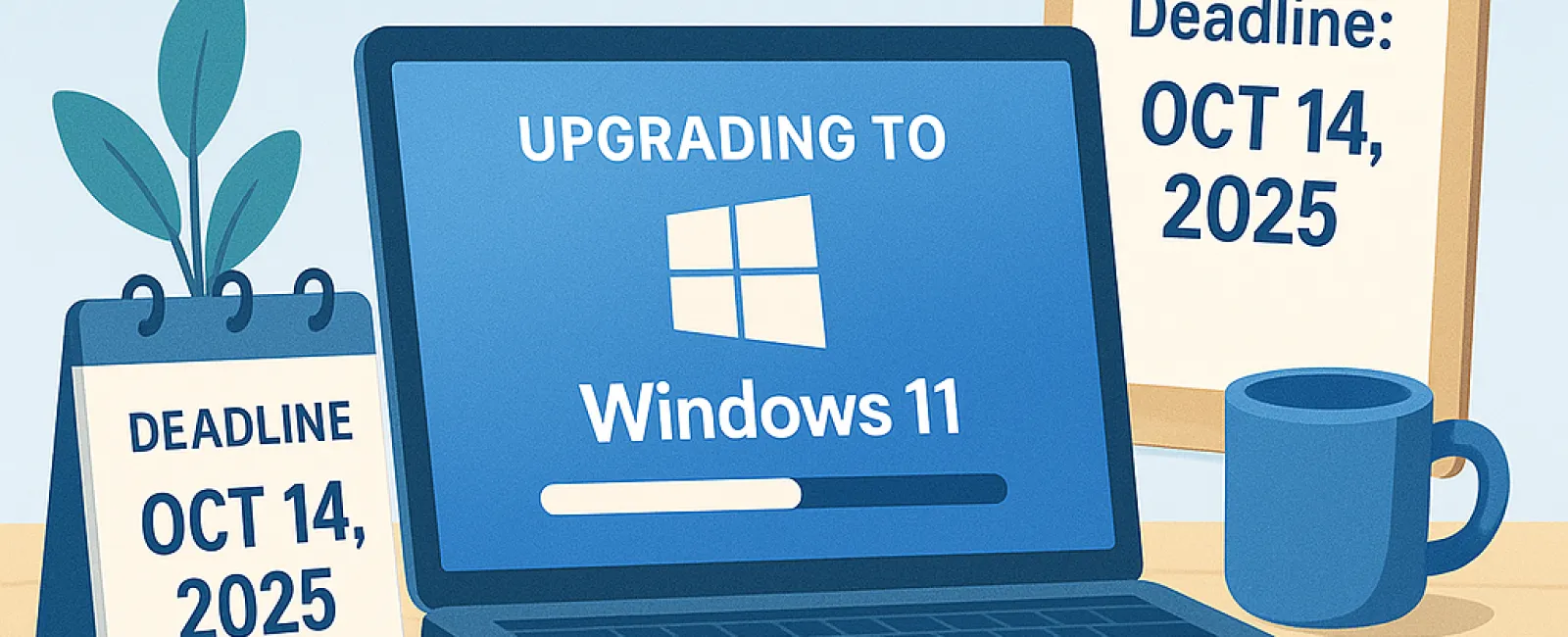June 23, 2025
If your business is still running Windows 10, it's time to face the facts: the countdown has begun. Microsoft will officially end support for Windows 10 on October 14, 2025. After that date, there will be no more security updates, bug fixes, or technical support. But here's the real concern for business owners: the cost of delaying isn't just about eventually having to upgrade—it's about what waiting could cost you right now.
Procrastination Is Costly
We understand—upgrading every machine isn't exactly a budget-friendly or exciting task. It's tempting to put it off until something goes wrong. But here's what postponing the upgrade really costs you:
1. No More Safety Net. Once support ends, you're exposed. Every new security vulnerability becomes your problem. Hackers target outdated systems because they're easy prey. It's like locking the front door but leaving the windows wide open. A single security breach could cost thousands—or even threaten your entire business.
2. Compatibility Problems. Many business-critical applications—accounting software, CRMs, and industry-specific tools—are already dropping support for Windows 10. Imagine your system crashing during a client demo or a crucial project. Plus, new printers, peripherals, and security tools may no longer work properly with your outdated OS.
3. Reduced Productivity. Older systems run slower, crash more often, and frustrate your team. Even minor delays add up, hurting efficiency, morale, and your competitive edge. If each employee loses 10-15 minutes per day due to tech issues, what does that add up to over a month?
4. Emergency Upgrades Cost More. Waiting until systems fail or access is lost means paying premium prices for emergency hardware, rush IT services, and dealing with costly business interruptions. A bit of planning now can save you from scrambling—and overspending—later.
5. Compliance Risks. If your business handles sensitive data or must comply with regulations like HIPAA or PCI-DSS, running unsupported software could lead to fines or legal trouble. Most regulatory standards require up-to-date security, which Windows 10 won't provide after October 2025.
What Proactive Business Owners Are Doing
They're getting ahead by not only upgrading devices but also by using this opportunity to:
- Assess which devices need replacing
- Streamline software and tools
- Strengthen cybersecurity
- Plan IT budgets wisely for 2025 and beyond
How to Ensure a Smooth Transition
Here's our recommended approach:
- Conduct a compatibility check—some machines won't support Windows 11 and will need replacement
- Audit your applications to confirm they run on Windows 11 or newer
- Budget for new hardware now to avoid supply chain delays
- Partner with an experienced IT provider who can manage the whole upgrade seamlessly, minimizing downtime and surprises
Don't Wait Until October to Panic
Delaying the upgrade will cost you more—in money, stress, and lost opportunities. We're helping small businesses handle this transition the smart way: planned, smooth, and optimized for growth. Let's get ahead of the deadline together.
Click
here or call us at 419-678-2083 to book your 10-Minute Discovery Call
and we'll help you identify what
needs upgrading, what can stay and how to build a transition plan that won't
disrupt your business before the deadline.




